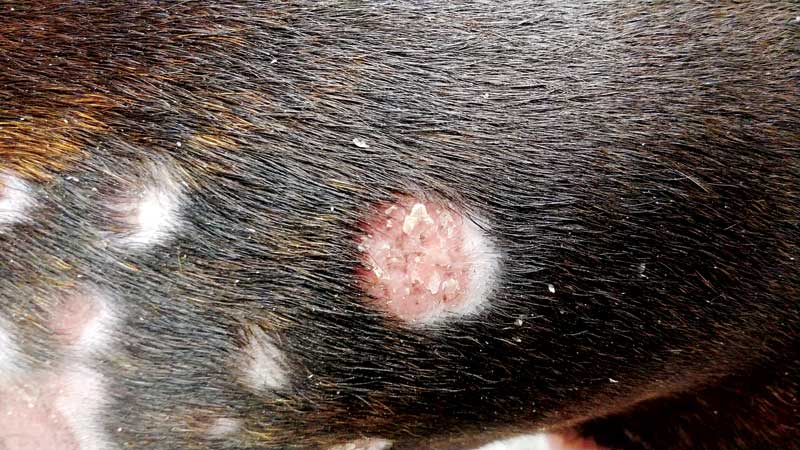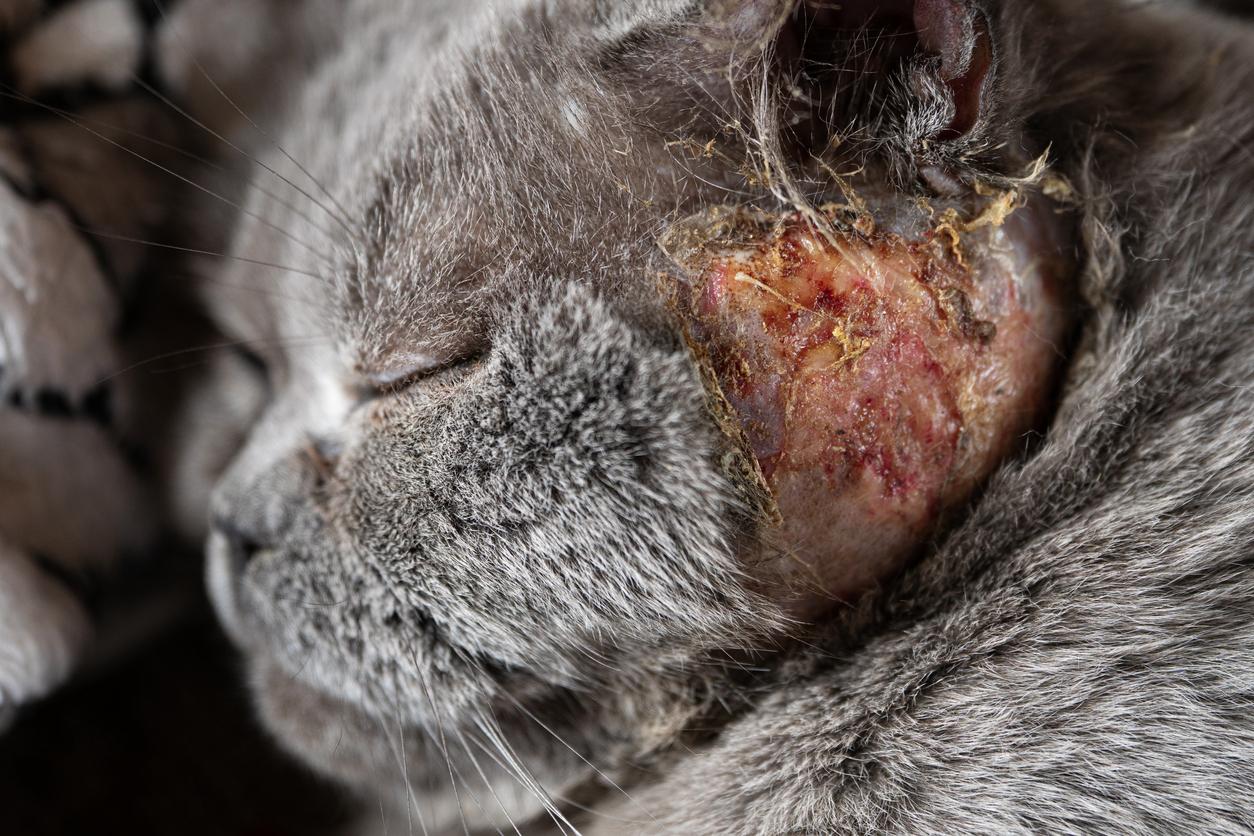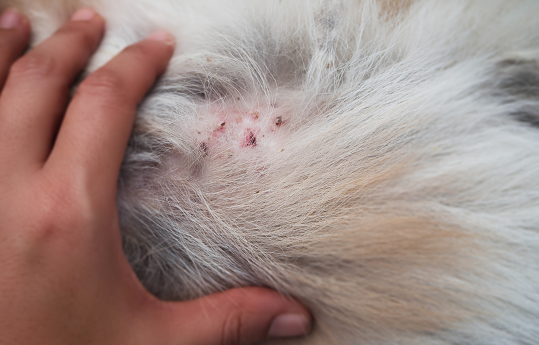Pyoderma in Pets
What is pyoderma?
Pyoderma is defined as a bacterial skin infection. Pyoderma may also be referred to as impetigo, especially in young puppies.
What are the clinical signs of pyoderma?
The most common clinical signs associated with pyoderma are papules or pustules that form on the skin. These lesions often look similar to pimples in humans. They are most often red and raised, with a white pus-filled center.
Other signs include circular crusts, dry or flaky patches of skin, hair loss, and itching. In short-haired breeds, the coat may appear to protrude or stick up in areas, mimicking hives, or it may appear moth-eaten because of patchy hair loss. Some cases may involve a moist layer on the skin or a musty odor, particularly in between toes or skin folds.

What causes pyoderma in pet?
Bacterial skin infection occurs when the skin's surface has been broken, the skin has become injured due to chronic exposure to moisture, the normal skin bacteria have been altered or changed, the blood flow to the skin has become impaired, or the immune system has been suppressed.
A specific type of pyoderma is skin fold pyoderma that develops in skin folds, such as facial folds, lip folds, tail folds, and in the groin or armpits. It may develop between the mammary glands in females that have had multiple litters of pups/kittens. It may also occur secondary to obesity when adjacent skin folds upon itself. The skin folds allow the surface of the two adjacent areas to lie in close contact, creating a warm, humid environment. In the presence of moisture, the normal skin bacteria then multiply, creating an infection in the fold.
Pyoderma is often secondary to allergic dermatitis and develops in the abrasions on the skin's surface that occur as a result of scratching. Fleas, ticks, yeast, or fungal skin infections, thyroid disease or hormonal imbalances, heredity, and some medications (immunosuppressive drugs and higher doses of steroids) may increase the risk of your pet developing pyoderma.

How is pyoderma diagnosed?
A diagnosis of pyoderma is often based on your pet's clinical signs and medical history. Additional tests, such as blood tests to determine if your pet has an endocrine disease such as hypothyroidism or hyperadrenocorticism (Cushing's disease), skin cytology (looking at a skin swab or tape prep under the microscope), skin culture and antibiotic sensitivity tests, and fungal cultures may be performed. In cases associated with allergic dermatitis, tests may be performed to determine your pet’s specific allergies.
How is pyoderma treated?
The typical treatment for pyoderma is antibiotic therapy for a minimum of three to four weeks. In chronic or recurrent cases, it is important to perform a skin culture and antibiotic sensitivity test to ensure that the proper antibiotic is used. Antibiotics in these cases may be needed for 8 to 12 weeks. Common antibiotics include amoxicillin (Amoxi-Tabs®, Amoxi- Drops® or Robamox®), cephalexin (Rilexine®, Keflex®, Vetolexin®), and clindamycin (Antirobe®, Cleocin®) whereas more resistant bacteria may end up needing a drug such as enrofloxacin (Baytril®).
Topical treatment includes sprays and medicated shampoos containing benzoyl peroxide, sulfur with salicylic acid, or chlorhexidine, which may need to be used once or twice per week for three to four weeks. Additionally, it is important that your pet has clean, dry, padded bedding. If allergies are the underlying cause, antihistamines or lower doses of steroids may be used at the same time before longer-term medications are determined.
Skin folds may need to be clipped and often benefit from the use of medicated wipes containing some of the above topical ingredients. The most important aspect here is to keep the area dry and practice good hygiene.
In extreme cases, surgery may be necessary to reduce or remove the skin folds.

What is the prognosis for my pet's condition?
The prognosis for uncomplicated pyoderma in the majority of cases is good to excellent. Most cases of pyoderma resolve with oral antibiotics and/or topical therapy. Chronic or recurrent cases may require additional testing to determine if there is an underlying condition contributing to the bacterial skin infection. Routine bathing with medicated shampoos can minimize recurrences.



